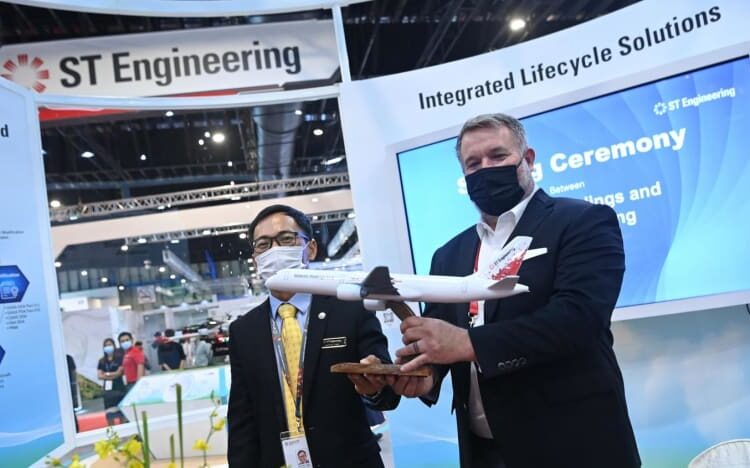ST Engineering has announced at the Singapore Airshow that it will be the first company in the world to convert a Boeing 757 passenger plane into a firefighting air tanker. According to the announcement, Galactic Holdings (which has US Forest Service firefighting contracts) will buy the aircraft and ST Engineering will perform the entirety of the conversion project, from design and engineering to certification, conversion, and support.
Not only does this program improve the idea of sustainability in aviation by re-utilizing retired aircraft it also promises to offer another, much-needed tool in the proverbial aerial fire fighting toolbox not only to fire-stricken regions of the U.S. but in many countries around the world.
While similar conversions have taken place with other airframes, the future; “Boeing 757P2T (Passenger to Tanker)” program will be a first for the 757 airframe. Beyond the design and engineering challenges, the biggest hurdle for any such program will be the certification process. However, ST Engineering's extensive experience in converting passenger 757s into cargo configurations is expected to play a pivotal role in helping the program move forward successfully.
It has been stated that the conversions will take place at one of the company’s maintenance and modification facilities in the United States. Once the aircraft have been completed and certified, ST Engineering will also be providing aftermarket support for Galactic Holdings’ operations. At this time, ST Engineering is expecting to convert between 10 and 15 aircraft for Galactic Holdings, which would potentially allow the company to have aircraft deployed on contracts across the globe.
While few specifics have been released about the future 757P2T, which is projected to enter service in 2024, what has been shared thus far seems to be quite promising. At this time, the design of the retardant delivery system is said to be “state of the art” and will involve removing the seats, plugging the windows, and installing two fire-retardant tanks in the cabin, with fore and aft doors located on the belly of the fuselage. The system’s expected capacity is 7,000 gallons (26,497 liters) of fire retardant which is nearly double that of other LAT aircraft which will make it one of the largest capacity air tankers in the sky.
Given the 757’s size and renowned performance capabilities, it does not need the longer runways that VLATs require. This would potentially allow the aircraft to operate out of smaller, more numerous tanker bases. The 757 is also more fuel-efficient than most other air tankers in service today, which further adds a tangible eco-friendly aspect to the program, beyond the already significant environmental benefits of repurposing retired airframes rather than scrapping them.
757s are still in service in great numbers with many air carriers around the world today. and were produced for 23 years before the line was ended in favor Boeing’s 737 and 787 models. From the time the first narrow-body medium-range twinjet (N757A) rolled off the line in 1982, until the last 757 was delivered to Shanghai Airlines in 2005, 1,050 757s were delivered - making it one of the few models of aircraft which have eclipsed more than 1,000 sold.






